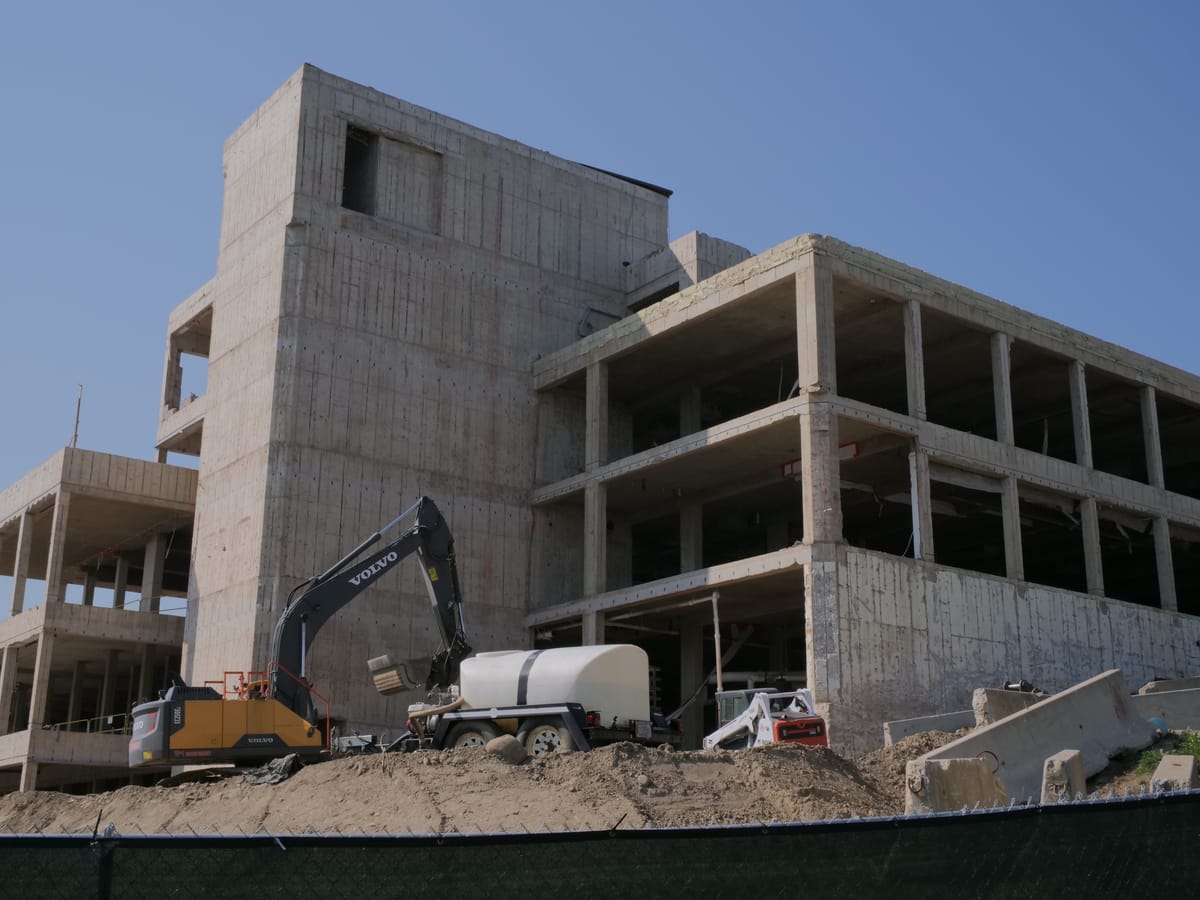Demolition of Merrill, CAP Construction on Schedule
Work on the new student center and the geothermal heating system overtook campus this summer and will continue through the fall. The projects are on-schedule despite weather challenges.

Over the past few months, work crews have begun the demolition of Merrill Science Center and the first phase of construction related to the college’s Climate Action Plan (CAP) goals. The demolition of Merrill is part of an ongoing plan to construct a new Student Center and Dining Commons. The CAP construction entails transitioning the campus’ steam heating and cooling systems to geothermal systems, one part of the college’s commitment to transition away from fossil fuels.
The new Student Center will connect the upper and lower campuses and provide students and faculty with a place to interact. The construction of the new building center is set to be completed by the summer of 2026. The demolition work on Merrill is projected to continue into the late fall. Merrill’s foundation will be kept and reused to reduce concrete waste.
Gabe Proia ’25 commented on his experience living in the Greenways and observing the nearby construction.
“I think it’s fascinating to watch, and I like knowing how it’s progressing. It can be a bit loud at times but it’s never affected my quality of life or anything. It’s also very contained and doesn’t impede my ability to get around campus,” Proia said.
A major challenge in the Student Center project was the asbestos discovered in the old science center. Due to the volume of asbestos in the building and the required work, the site was left empty for a while prior to this summer’s long-awaited demolition.
Tom Davies — executive director of planning, design, and construction — described the issues involved in the asbestos abatement process.
“The primary concerns are exposure to the technicians doing the abatement and proper disposal of the materials removed; safety to people nearby is certainly important but the level of hazard is quite low,” he said.
The site of demolition is contained within a large fenced-off zone, and often students passing by can catch a glimpse of pieces of the building being torn off in small chunks and sprayed with water as they are. This is all part of the process of demolition, and done to contain any asbestos shaken loose.
As for the CAP, this summer, the construction resulted in the complete removal of large portions of the paths around the Science Center. This allowed workers to replace the piping that previously supported the heating to the area.
“The primary challenge was the weather, which was unusually wet,” Davies said. “[Many of the projects] are hampered or fully interrupted by rain, and with heavy rain the clean up after consumes even more would-be construction time. So our climate action project was hampered by unusual climatic activity.”
Despite the significant challenges to construction, Davies insisted that the project remains on schedule. Construction on the new system is set to finish in 2030, with the areas around main campus forming a connected loop, a section of which will be added each year. Currently the Science Center, Greenways, and James and Stearns are integrated.
According to the information page on the CAP, the college hopes to achieve carbon neutrality by 2030. In order to do so, the school will need to switch all heating systems to ones that do not require carbon emissions from fossil fuel combustion — namely, steam heating systems will be phased out. The ground-sourced heating system will use energy from the earth to heat water to the required temperatures using electric heat pumps.
Reflecting on both projects, Davies noted that “most of the planning and design took place through the depths of the pandemic,” which forced his team to work remotely and caused shortages in many crucial supplies. “The focus and additional effort required to overcome these challenges has been no less than heroic,” he said.





Comments ()